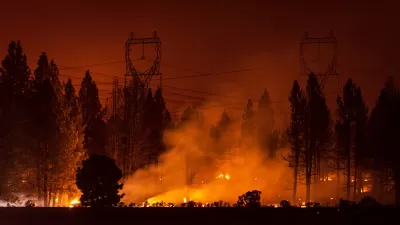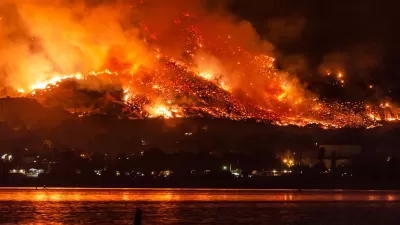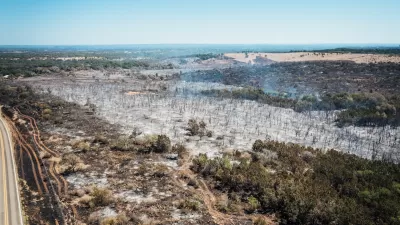A mix of strong seasonal Santa Ana winds and an unusually dry year is fueling winter wildfires in California.

A lack of rain and seasonal Santa Ana winds are creating dangerously dry conditions in Southern California, where the Franklin Fire has burned over 4,000 acres just this last week.
In an article for High Country News, Kylie Mohr explains that the combination of dry vegetation and strong winds is fueling stronger wildfires in California and elsewhere. According to climatology professor John Abatzoglou, “We are still waiting for the onset of the wet season in that part of the state, which would meaningfully wet the fuels and put the threat of large fires to bed.”
“The winds will die down and rain will eventually return to Southern California, but this one-two punch of high wind and parched landscapes will recur and intensify in the future. Climate change projections suggest Southern California’s wet season will narrow, and its rainy season arrive later.” A delayed rainy season — a pattern showing up over the last six decades — signals increased risk in years to come.
FULL STORY: Wildfire … in December?

Planetizen Federal Action Tracker
A weekly monitor of how Trump’s orders and actions are impacting planners and planning in America.

Map: Where Senate Republicans Want to Sell Your Public Lands
For public land advocates, the Senate Republicans’ proposal to sell millions of acres of public land in the West is “the biggest fight of their careers.”

Restaurant Patios Were a Pandemic Win — Why Were They so Hard to Keep?
Social distancing requirements and changes in travel patterns prompted cities to pilot new uses for street and sidewalk space. Then it got complicated.

Platform Pilsner: Vancouver Transit Agency Releases... a Beer?
TransLink will receive a portion of every sale of the four-pack.

Toronto Weighs Cheaper Transit, Parking Hikes for Major Events
Special event rates would take effect during large festivals, sports games and concerts to ‘discourage driving, manage congestion and free up space for transit.”

Berlin to Consider Car-Free Zone Larger Than Manhattan
The area bound by the 22-mile Ringbahn would still allow 12 uses of a private automobile per year per person, and several other exemptions.
Urban Design for Planners 1: Software Tools
This six-course series explores essential urban design concepts using open source software and equips planners with the tools they need to participate fully in the urban design process.
Planning for Universal Design
Learn the tools for implementing Universal Design in planning regulations.
Heyer Gruel & Associates PA
JM Goldson LLC
Custer County Colorado
City of Camden Redevelopment Agency
City of Astoria
Transportation Research & Education Center (TREC) at Portland State University
Camden Redevelopment Agency
City of Claremont
Municipality of Princeton (NJ)





























